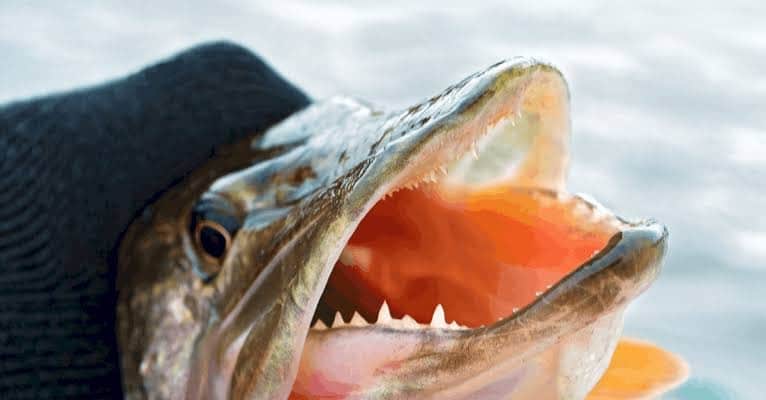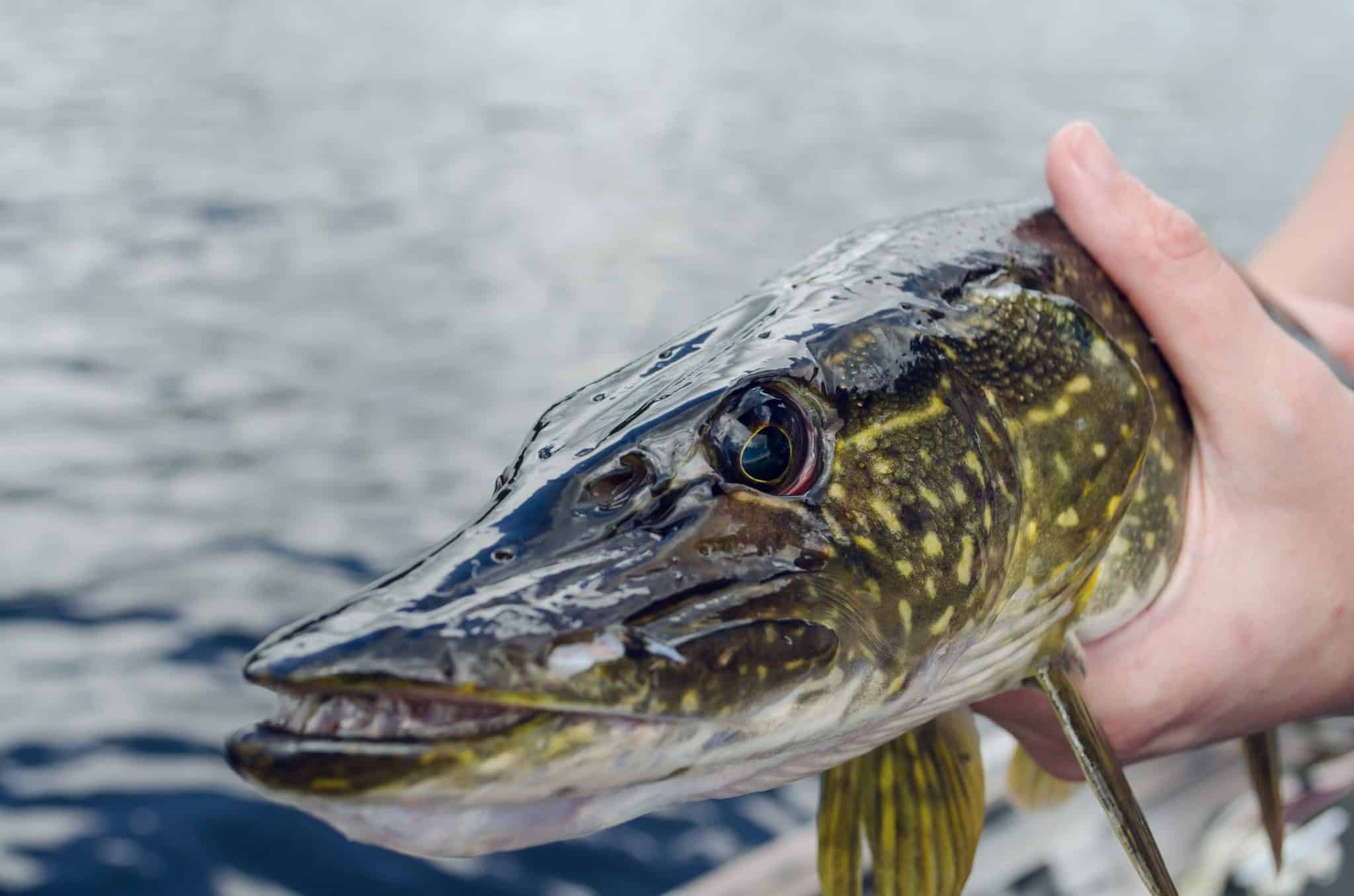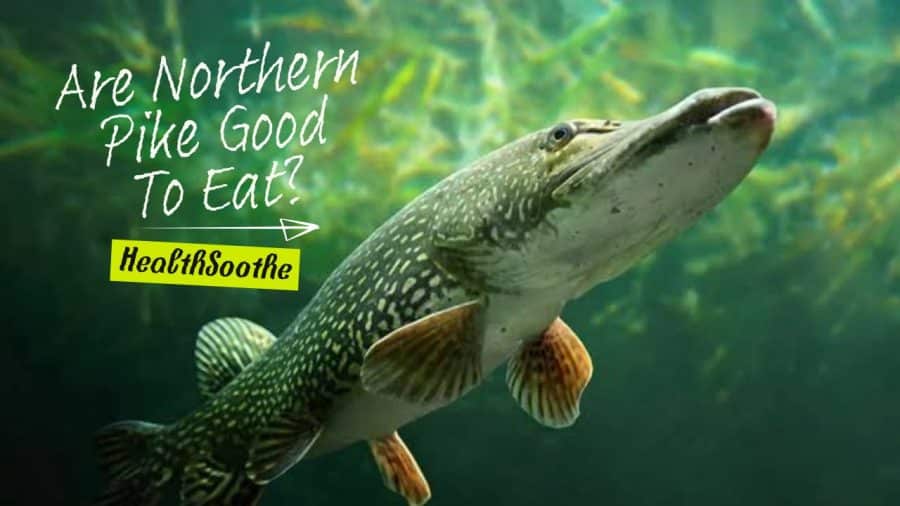If you're a fishing enthusiast or simply love indulging in fresh, flavorful seafood, then you probably might have come across the mighty northern pike.
Quick Facts About Northern Pike
Known for its aggressive nature and sport fishing value due to their impressive size (they can grow up to 4 feet long), this predatory game-fish is a popular target for anglers across North America, Europe, and parts of Asia.
But aside from being an exciting catch, northern pike are viewed as a 'trash fish' which leaves us wondering: are northern pike good to eat? After all, they are often located in cold, clean water.
In this article, we’re going to take a closer look at this iconic game fish that is highly sought after throughout the world by freshwater anglers and clear the air on whether or not they're good to eat. Read on, because you might be shocked!
- What is Northern Pike?
- Are Northern Pike Good To Eat?
- What Does Northern Pike Taste Like?
- Can You Eat Northern Pike Skin?
- What is The Best Eating Size of Northern Pike?
- Is Northern Pike High In Mercury?
- Can You Eat Northern Pike Raw?
- Do Northern Pike Fish Have Bones?
- How To Cook Northern Pike
- What Are The Nutritional Value of Northern Pike?
- Conclusion
What is Northern Pike?
Northern Pike, also known scientifically as Esox lucius, is a predatory fish that can be found in freshwater lakes and rivers across earth's northern hemisphere. They are popular among anglers for their large size and aggressive nature.
These fish have elongated bodies shaped like a torpedo with greenish-brown colouring along their backs and white or yellow bellies. They are characterised by long snouts filled with sharp teeth, which they use to catch their prey.

Northern Pike thrive predominantly in cool water habitats such as lakes, reservoirs, and slow-moving rivers. They prefer areas with plenty of vegetation where they can ambush smaller fish and other aquatic creatures.
As voracious predators, Northern Pike feed on a wide variety of prey including minnows, perch, walleye, frogs, crayfish, and even small mammals like mice or ducklings. Their diet often depends on the availability of food sources in their habitat.
Are Northern Pike Good To Eat?
Are Northern Pike good to eat? This is a question that often comes up among anglers and seafood enthusiasts. Well based on my research, northern pike are indeed good to eat but they're not as common as other seafood options such as salmon and lake trout.
When it comes to culinary appeal, opinions on Northern Pike vary widely. Some people love the firm texture and mild flavour of its white flesh, comparing it to walleye or bass while others find it too bony or muddy-tasting for their liking.
However, many people are discouraged by its skin which is slimy in nature and also its pungent smell when cut open. Yet, northern pike offers firm texture with a delightful and relatively mild flavour.
When prepared properly, Northern Pike can only not make for a delightful meal, but also offers numerous health benefits. It is an excellent source of several high profile vitamins and minerals needed for the betterment of the human body.
What Does Northern Pike Taste Like?
When it comes to the taste of northern pike, opinions can vary from person to person. Some people describe it as a mild and delicate flavour, while others find it to be slightly fishy or even muddy. The taste of northern pike is influenced by various factors such as its habitat, diet, and how it's prepared.
Freshwater fish like northern pike tend to have a milder flavour compared to saltwater species. This makes them ideal for those who prefer a less "fishy" taste. However, if caught in waters with excessive algae or vegetation, the flavours can become more pronounced.
The texture of northern pike meat also plays a role in its overall taste experience. When cooked properly, the flesh is firm yet tender with small flakes that hold together well.
To enhance the flavour of your northern pike dish, consider marinating the fillets before cooking or adding herbs and spices during preparation. This can help balance any potential earthy or fishy flavours and create a more enjoyable dining experience.
Can You Eat Northern Pike Skin?
Yes! The skin of northern pike is perfectly edible. Many people actually enjoy the crispy texture and unique flavour that the skin adds to the dish.
The skin of Northern Pike is thin but tough, so it holds up well when cooked. It becomes golden and crispy when fried or baked, adding an extra layer of deliciousness to your meal. Some even compare it to the taste and texture of potato chips!
However, it's important to note that not everyone enjoys eating fish with the skin on. If you prefer a more refined dining experience or are concerned about any potential contaminants in the fish's outer layer, you can always remove the skin before cooking.
What is The Best Eating Size of Northern Pike?
When it comes to determining the best eating size of Northern Pike, it all comes down to your personal preference and regional regulations.
The general consensus among anglers and culinary enthusiasts is that smaller Northern Pike tend to be the tastiest. This is because larger pikes have a higher chance of accumulating toxins in their flesh over time.
In terms of length, most experts agree that Northern Pike between 19 and 24 inches offer the perfect balance between flavour and texture. These medium-sized pikes are typically leaner and have a milder taste compared to their larger counterparts.
However, if you prefer more tender meat with a stronger flavour profile, you can opt for slightly bigger specimens ranging from 24 to 28 inches. Just keep in mind that as the size increases, so does the risk of encountering some coarse bones increases too.
Is Northern Pike High In Mercury?
Mercury is a naturally occurring element found in the environment. It can be released into water bodies through various sources like industrial pollution and mining activities. Fish that live in these contaminated waters may accumulate mercury in their bodies, which can pose health risks to humans if consumed.
When it comes to northern pike, the level of mercury varies depending on where they are caught. Generally, larger predatory fish tend to have higher mercury levels as they consume smaller fish that may also contain mercury.
It's important to note that while northern pike can contain some level of mercury, it doesn't necessarily mean you should avoid eating them altogether. The key is moderation and knowing where your fish comes from. If you catch northern pike in clean waters or purchase them from reputable sources, the risk of high mercury levels is significantly reduced.
To further minimise any potential risks, it's recommended to trim off fatty portions of the fish where contaminants tend to accumulate. Cooking methods such as grilling or baking also help reduce any remaining traces of mercury.
Can You Eat Northern Pike Raw?
When it comes to eating raw fish, some people may hesitate due to concerns about safety and taste. So, can you eat Northern Pike raw? The answer is yes, but there are a few things you should keep in mind.
It's important to ensure that the Northern Pike has been properly handled and stored before consuming it raw. Freshness is key when eating any type of fish raw, as this reduces the risk of foodborne illnesses.
While some people enjoy the delicate flavour and texture of raw Northern Pike, others might find its taste too strong or even "fishy." It really depends on personal preference.
If you decide to try eating Northern Pike raw, make sure to remove any bones carefully. This will enhance your dining experience and prevent potential choking hazards. Additionally, slicing the fish into thin pieces will enable better absorption of flavours from accompanying ingredients like soy sauce or wasabi.
Whether you choose to eat Northern Pike raw or cooked depends entirely on your personal taste preferences and comfort level with consuming raw seafood. As always though, be sure to handle and store your fish properly for optimal safety!

Do Northern Pike Fish Have Bones?
Like most fish, Northern Pike does indeed have bones. However, the structure and arrangement of these bones make them quite easy to remove.
When filleting a Northern Pike, it's important to be aware of its Y-bones. These are small interlocking bones found in the central area of the fillet. While some people find them off-putting, with a little practice and knowledge, removing these bones becomes part of you.
To successfully debone a Northern Pike fillet, start by making an incision at an angle just above the Y-bones. Then carefully follow along each side of these bones while gently lifting them away from the flesh using your knife or fingers.
By taking your time and being patient during this process, you'll be left with boneless fillets ready for cooking! Remember though that even if you miss a few tiny pin bones here and there after cutting your pike into smaller portions – don't worry tho! They're easily spotted once cooked and can be removed effortlessly with a fork or tweezers.
How To Cook Northern Pike
When it comes to cooking northern pike, there are numerous delicious ways to prepare this versatile fish. The key is to highlight its delicate flavour and tender texture. Here are a few simple methods you can try:
- Baking: Preheat your oven to 375°F (190°C). Season the pike with salt, pepper, and your favourite herbs or spices. Place it on a greased baking sheet and bake for about 15-20 minutes until the fish flakes easily with a fork.
- Grilling: Fire up the grill and brush it with oil to prevent sticking. Season the pike fillets with lemon juice, garlic powder, and dill or any other seasoning of your choice. Grill over medium heat for about 4-5 minutes per side until nicely charred.
- Pan-frying: Heat some oil in a skillet over medium-high heat. Coat the pike fillets in flour mixed with salt, pepper, paprika, or any desired seasoning blend before adding them to the hot pan. Fry for approximately 3-4 minutes per side until golden brown.
Remember that northern pike has white flesh which tends to be leaner than some other species like salmon or trout but still incredibly tasty! Experimenting with different flavours and cooking techniques will help you find your favourite way of enjoying this freshwater delicacy!
What Are The Nutritional Value of Northern Pike?
What makes Northern Pike a great choice for your dinner plate goes beyond its delicious taste and versatility in cooking. This freshwater fish is also packed with essential nutrients that can contribute to a well-balanced diet.
One of the key nutritional benefits of Northern Pike is its high protein content. Protein is an important macronutrient that plays a crucial role in building and repairing tissues, supporting muscle growth, and promoting overall health. A serving of Northern Pike can provide you with a significant amount of protein needed for your daily requirements.
Also, this fish is rich in omega-3 fatty acids, which are known for their numerous health benefits. Omega-3s have been shown to reduce inflammation, promote heart health, support brain function, and even improve mood. Including Northern Pike in your diet can be a tasty way to boost your intake of these beneficial fats.
Northern Pike is also a good source of several vitamins and minerals such as vitamin B12, niacin, phosphorus, selenium, and potassium. These nutrients play various roles in maintaining optimal health including energy production, nerve function support, bone strength promotion, antioxidant activity enhancement,and fluid balance maintenance.
Incorporating Northern Pike into your regular meal rotation not only provides you with a flavorful dining experience but also ensures that you're getting valuable nutrients that can contribute to overall well-being.
Conclusion
We've finally reached the end of this article. While Northern Pike is indeed a fish that is good to eat, it also offers a range of nutritional benefits. Its firm and flavorful flesh make it a popular choice among anglers and seafood enthusiasts alike.
So next time you reel in a Northern Pike during your fishing adventures or spot it on the menu at your favourite seafood restaurant, take comfort in knowing that this freshwater predator is more than just an exciting catch —it's also deliciously satisfying when prepared correctly!

My name is Iyanu Kolawole, I’m a professional content writer and web developer. I have always been passionate about writing and developing my coding skills. I started my career as a content writer and have written for several companies and brands. I am also a skilled web developer and have built several websites for businesses and individuals.I am a hardworking individual who is always looking to improve my skills. I am constantly striving to learn new things and to be the best at what I do. I am also a very friendly person and enjoy working with others.
The content is intended to augment, not replace, information provided by your clinician. It is not intended nor implied to be a substitute for professional medical advice. Reading this information does not create or replace a doctor-patient relationship or consultation. If required, please contact your doctor or other health care provider to assist you to interpret any of this information, or in applying the information to your individual needs.


